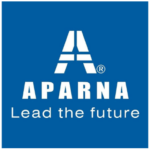Adopting Climate-Adaptive Building Techniques
The last few years have seen rising temperatures, extreme weather events, rising sea levels, and many more. The reality of climate change is undeniable, as its impacts are becoming increasingly evident. It is more important to invest in climate-adaptive building strategies, energy-efficient construction materials, and weather-resilient designs.
Aparna Enterprises Limited being a building materials manufacturer, in this blog showcases how adaptive architecture is a necessity for the future.
Energy-efficient construction
Buildings are a major consumer of energy and a significant contributor to greenhouse gases. They consume energy to meet the heating, cooling, and lighting needs. Energy-efficient construction techniques intend to reduce energy requirements.
For instance, adding facades to your high-rise commercial building helps natural light to pass in and reduce the lighting needs. Similarly, using uPVC windows and doors helps maintain an optimal temperature inside the buildings and minimises the need for heating and cooling requirements.
Water management
Adapting weatherproof building techniques helps promote resistance against wind, rain, snow, etc. Choosing the correct location and understanding local climate patterns help.
The buildings must be waterproofed to ensure that water does not seep into the structure. This helps mitigate the damages and prevent mould growth. You must seal the structures and have a proper drainage mechanism for windows and roofs. You must also invest in weatherproof materials.
Resilience to heatwaves
A UN study estimates that, by 2050, around 1.6 billion people will be exposed to heatwaves and high temperatures. Using green roofs, reflective surfaces, high-rise rooms, and large ventilatory openings helps minimize the impact of heat waves. Creating green space can also reduce the impact of heat waves in urban areas.
Using sustainable building materials
For construction, use environmentally friendly, sustainable building materials. While prioritising climate-resilient structures, it is important to note that using sustainable materials is crucial in the long run. You must prioritise materials that are energy-efficient, recyclable, and water-efficient design and features. Aparna Enterprises Limited, being a leader in Construction and building materials offers sustainable building materials solutions for all your diverse needs regarding your projects!
Smart technologies for buildings
Integrating automation and smart technologies for buildings helps minimise energy consumption and electricity needs. Integrating sensors, shading systems, energy management systems, etc. helps automate the usage of lights, heating, and cooling systems based on the environmental conditions. This helps optimize electricity usage and promotes energy-efficient construction.
Modular construction
Using modular techniques helps optimize the available space and also achieves climate adaptation in construction. Using recyclable materials helps achieve durability, extends the lifespan of buildings, and minimizes construction waste.
Conclusion
Prioritising sustainable, energy-efficient materials in building construction helps achieve climate-adaptive buildings in the long run. Weatherproof building techniques help buildings withstand adverse climate conditions like floods, heatwaves, etc.
Aparna Enterprises Limited is a leading manufacturer and supplier of building and construction materials. AEL promotes innovative materials that help achieve weather-resilient design and climate-adaptive buildings. It manufactures a wide range of materials, including facades, uPVC profiles, aluminium windows, doors, etc. to help reduce the lighting, cooling, and heating requirements. Also, for material quality, AEL prioritises sustainable, recyclable construction materials.
FAQs
- What are the key features of climate-adaptive building?
Climate adaptation in construction is about using materials that drive energy efficiency, minimise electricity consumption, promote water efficiency, exhibit resilience to harsh weather conditions, etc. This helps promote weather-resilient design and achieve adaptive architecture.
- What are some examples of energy-efficient materials used in climate-adaptive buildings?
Facades, uPVC materials, aluminium materials, and modular construction techniques are some of the common energy-efficient materials used to drive energy-efficient construction.
- How to achieve a weather-resilient design in building construction?
Using impact-resistant windows and doors, appropriate waterproofing techniques, elevated foundations, high-rise buildings, drainage systems, etc. helps buildings achieve climate-resilient structures that can withstand harsh weather conditions.

